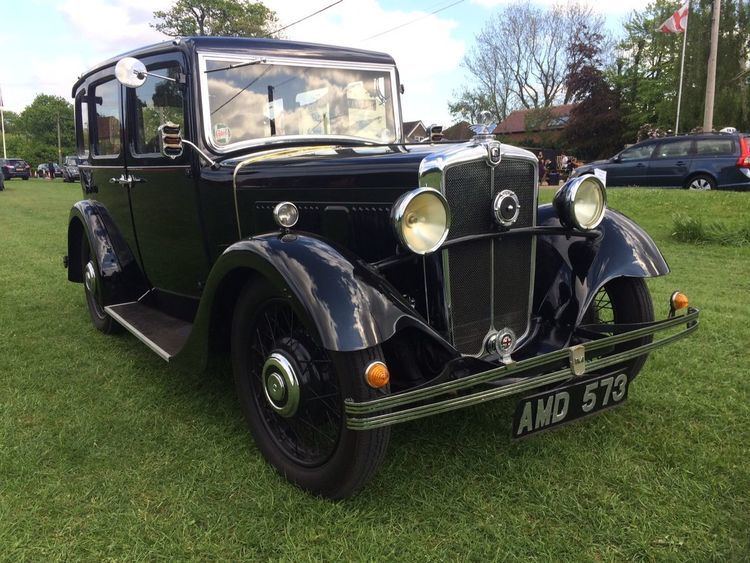Production 1932–1948 Layout FR layout | ||
 | ||
Assembly Cowley, Oxford, Oxfordshire, United Kingdom | ||
The Morris Ten announced 1 September 1932 was a medium-sized car introduced for 1933 as the company's offering in the important 10 hp sector of the British market. It continued through a series of variants until October 1948 when along with Morris's Twelve and Fourteen it was replaced by the 13.5 hp Morris Oxford MO.
Contents
Morris Ten and Ten Four
Morris Ten was a new class of car for Morris now equipped with wire wheels and a new type of mud guarding—domed wings with wing side shields—it was powered by a Morris 1292 cc four-cylinder side-valve engine employing a single SU carburettor which produced 24 bhp at 3,200 rpm. The gearbox was a four-speed manual transmission unit, and Lockheed hydraulic brakes were fitted.
The October 1932 Olympia Motor Show introductory prices:
Body styles at launch in August 1932 were restricted to a saloon and two-door coupé, but a four-door tourer joined the range in December, followed in 1934 by a two-seater with dickey seat and a Traveller's Saloon.
Twelve months later, with the introduction of the Ten Six, Four was added to the Ten's name. The chassis was strengthened, engine mountings were revised and synchromesh appeared on the gearbox. Engine output was increased to 27½ bhp by April 1934. Two tone paint schemes were optional from 1935.
Morris Ten Six
On 28 August 1933 a 12 hp six-cylinder version of the Ten was announced on the longer-wheelbase chassis of the Cowley Four.
PricesA sporting version, the Ten-Six Special was also made in small numbers with tuned engine and twin SU carburettors. the standard body was an open four-seater, but some chassis were supplied to coachbuilders.
Ten Six Special sports
The Morris Ten Six Special sports displayed at Olympia in October 1933 had a long bonnet with a strap, louvred valances by the frame without running boards, low-sloping or cutaway doors, and a flared back with a low tail. Its chassis was as the Ten Six with twin carburettors, a special radiator with stone-guard, spring steering wheel, special speedometer and revolution indicator, remote gearbox control, two horns, an electric petrol pump and automatic ignition advance.
Morris Ten series II
A rationalisation of the Morris range took place in 1935 and the new Ten series II shared its body and chassis with the Morris Twelve series II. A three-speed manual gearbox was fitted at first, but a four-speed reappeared as an option from 1936 and standard from 1937. Steel disc Easiclene wheels replaced the wire ones at the end of 1936. Two tone paintwork is common.
Morris Ten series III
For 1938 the engine was updated to overhead valve as fitted to the Wolseley Ten increasing the power output from 27 to 37.5 bhp. The chromium-plated radiator surround was replaced by a painted one, and all paint schemes were single, rather than two-tone.
Morris Ten Series M
The Morris Ten Series M was introduced in 1938. It was a completely new car with unitary construction. The engine, with an output of 37 bhp (28 kW) at 4600 rpm was new and was also fitted to the MG TC sports car in a higher state of tune. The chassis was very conventional for the time, with solid axles front and rear, and the suspension used leaf springs all round. The car had a top speed of around 62 miles per hour (100 km/h).
Only saloon bodies with optional sun roof were made for the civilian market but a range of pick up bodies were fitted during World War II as one of among many similar products by British manufactures collectively known by the nickname "Tillies". The car was also assembled in India as the Hindustan 10 .
Postwar models can be distinguished from those made before 1940 by a cosmetic change to the radiator grille, the later versions being rounder, faired in to the engine side panels and without the Morris badge at the top.
